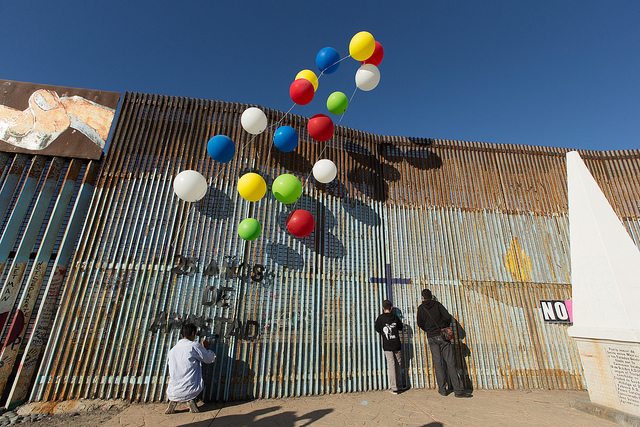By Carly Graf
Medill Reports
President Donald Trump described the U.S. and Mexican boundary as “our very dangerous southern border,” during his State of the Union address Tuesday night, reigniting concerns about punitive immigration practices and mental health impacts.
His rallying cry included a call to Congress to put the “ruthless coyotes, cartels, drug dealers and human traffickers out of business.”
In the shadow of the longest government shutdown in history, spurred by a political standoff over funding for a border wall, scrutiny of the administration’s policy rekindled also after a January a report from the Office of the Inspector General. The report revealed that thousands more children may have been taken from parents than initially reported.
“One of the things that keeps us awake at night, though, is that these separations continue,” said Jennifer Nagda, policy director at the Young Center for Immigrant Children’s Rights. Nagda is based in Chicago but the organization oversees the cases of separated children at various locations across the country.
Experts such as David Ansari, a medical anthropologist and transnational migration expert, believes the practices of detaining migrants fleeing trauma and separating families should be considered “pathogenic policies” that trigger and sustain poor health.
The American Academy of Pediatrics agrees.
“They are detained in facilities that utterly fail to meet their needs. Children are kept in cages and sleep on cement floors. They are exposed to frigid temperatures, open toilets and lights on all the time. And they aren’t receiving adequate medical and mental health screening and care,” wrote Dr. Colleen Kraft, former academy president in an editorial in December.
Consequences of such retributive policing extend far beyond the days spent in detention centers, especially for young children.
“Highly stressful experiences, like family separation, can cause irreparable harm, disrupting a child’s brain architecture and affecting his or her short- and long-term health,” Kraft said in an interview. “This type of prolonged exposure to serious stress—known as toxic stress—can carry lifelong consequences for children.”
Nagda recalled multiple cases of children sent to the Young Center who lost their ability to speak, forgot their potty-training skills and grew increasingly withdrawn after being separated from parents.
Stories of mistreatment at the border started to leak early last summer, quickly followed by a court order in June that mandated reunification for families who fit “certain criteria.” The combination scaled things down but, much to the public’s surprise, border officials continue to use detention and separation, making an already worrisome mental health crisis even more grave, said Ansari.
Despite its reunification requirement, the June court decision granted the Department of Homeland Security the authority to separate parents who have a “criminal history,” an open-ended classification with no public definition that’s been deployed to justify separations.
“We’ve had kids whose parents were taken away because an extended family member was in a gang, committed a burglary 15 years ago or was arrested for something and never charged,” Nagda said.
Many individuals crossing the southern border are seeking asylum, often fleeing violence or persecution. However, the Trump administration has systematically sought to restrict the flow of refugees and asylum-seekers by relying on deterrence, in essence making examples of some migrants to convince those who may come in the future that they’d be better off staying in their home country.
“Deterrence is just another form of violence,” Ansari said.
As another border-related government shutdown looms many mental health and immigration experts are calling on legislators to employ a more sympathetic approach to border policing, including the creation of a narrow definition of “criminal history” with clear parameters.
“Right now, it doesn’t serve the safety or interest of the kids,” Nagda said. “This shouldn’t be how we treat our children.”


